Xi extends congratulations to Shigeru Ishiba on election as Japanese PM
Xi extends congratulations to Shigeru Ishiba on election as Japanese PM
Xi extends congratulations to Shigeru Ishiba on election as Japanese PM
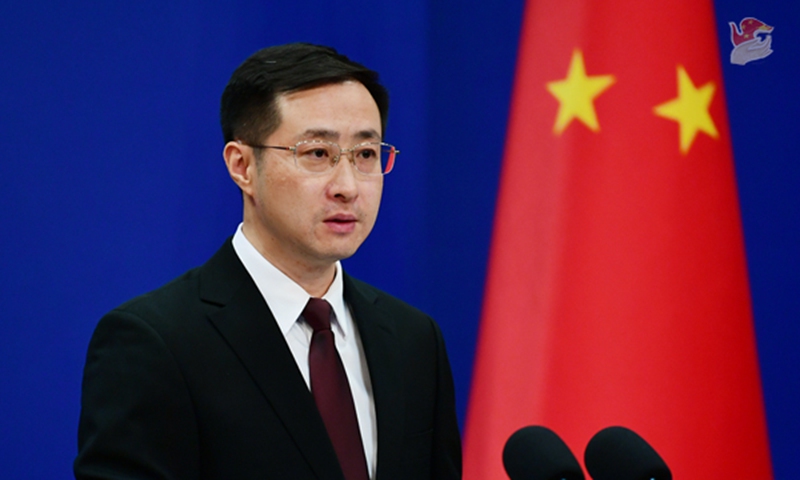
"Taiwan independence" is a dead end, and the US' insistence to support it by force will inevitably inflict harm to itself and suffer the consequences of its actions, a Chinese Foreign Ministry spokesperson said on Monday, after the White House announced that it has approved a military package of $567 million in defense support to Taiwan region.
US President Joe Biden on Sunday approved $567 million in defense support for Taiwan, the White House said, according to Reuters.
In response to US' latest move, Lin Jian, a spokesperson of Chinese Foreign Ministry, said at a Monday press briefing that the US' latest arms supply to China's Taiwan region, severely violates the one China principle and the stipulations of the three China-US Joint Communiques.
The US move is in fact to support and encourage Lai Ching-te and the Democratic Progressive Party (DPP) authorities in their stubborn pursuit of "Taiwan independence" and their provocation against the one China principle, Lin stressed.
This once again proves that the greatest threat to peace and stability in the Taiwan Straits and the most significant damage to the cross-Straits status quo come from the secessionist activities of Taiwan independence forces and the connivance and support they receive from external forces led by the US, Lin stated.
"Taiwan independence" is a dead end, and the US' insistence on "supporting it with force" will inevitably harm itself and face the consequences of its actions, Lin said on Monday.
"We urge the US side to abide by the one China principle and the three China-US Joint Communiques, and to stop arming Taiwan in any way," Lin said, "No matter how many weapons the US provides to Taiwan, it will not shake our firm determination to oppose 'Taiwan independence' and safeguard national sovereignty and territorial integrity."
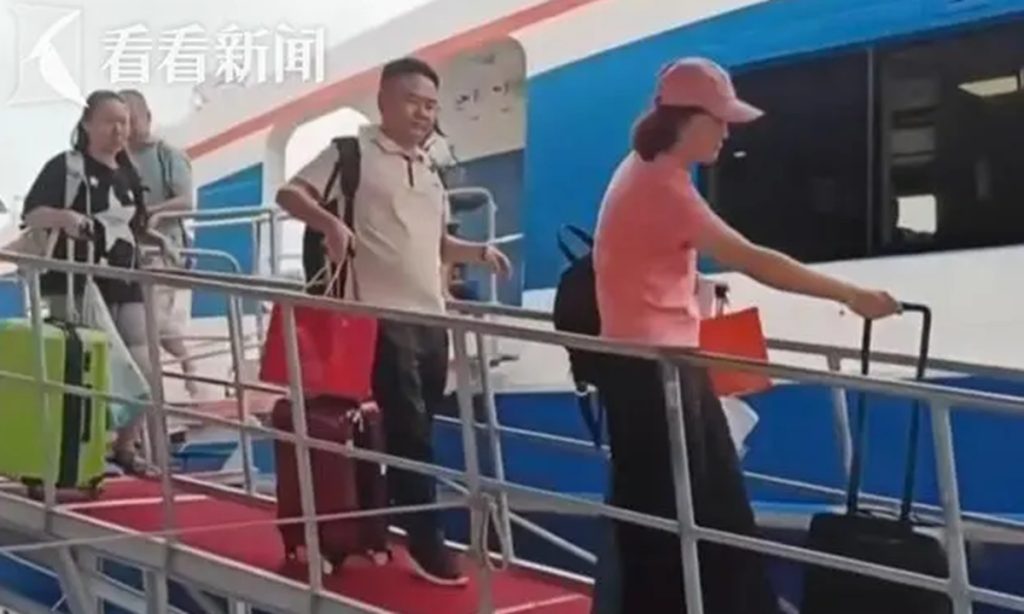
Residents and holders of residence permits in East China's Fujian Province have been able to apply for travel endorsements to Kinmen, an island located off the coast of Fujian, administered by the island of Taiwan, according to the Exit-Entry Administration Bureau under Fujian Provincial Department of Public Security on Friday.
Eligible individuals can apply to the department for an individual or a group tourist endorsement valid for six months. Travelers can depart from the Wutong and Shijing ports via the "mini three links" maritime route and return through the same ports within the allowed duration of stay.
According to the Xinhua News Agency, the maritime safety administration in Quanzhou has established a dedicated window for the ship traffic management system to strengthen dynamic monitoring of passenger ships, and ensure shipping companies comply with baggage and safety requirements, while strictly enforcing regular maintenance and overhaul systems.
The maritime sector will also strengthen the coordination with the meteorological department, urging ships to strictly adhere to sail bans.
A Fujian resident surnamed Chen told the Global Times on Saturday that he has always wanted to travel to the Taiwan region but didn't have the chance in recent years due to previous policy restrictions and his schedule. He said this is a good opportunity for him to visit Kinmen, noting that "both sides of the Taiwan Straits are one family."
On August 30, the Ministry of Culture and Tourism announced the resumption of allowing residents in Fujian to travel to Kinmen. The local government of Kinmen also organized a warm welcome ceremony for the first tour group from the mainland since the pandemic on September 22.
The group of over 20 tourists arrived in Kinmen from Xiamen, Fujian and were on a two-day sightseeing tour that ended on September 23.
The recent resumption of travel endorsements signals goodwill from the mainland, Zhang Wensheng, deputy dean of the Graduate Institute for Taiwan Studies at Xiamen University, told the Global Times on Saturday. He noted that the local residents of Kinmen are also eager for mainland visitors, as their presence would benefit tourism and contribute to local economic development.
Chen Yu-jen, a legislator from Kinmen, described the move as a positive start and expressed hope for more frequent progress between the two sides of the Taiwan Straits.
She added that the relationship between Kinmen and Xiamen would grow closer, according to the United Daily News, a media outlet from Taiwan.
China's central bank on Friday announced a cut in the reserve requirement ratio by 0.5 percentage points for financial institutions.
Chinese President Xi Jinping has extended congratulations to the faculty, students and alumni of the Communication University of China on its 70th founding anniversary.
In a reply letter to its faculty and students, Xi, also general secretary of the Communist Party of China Central Committee and chairman of the Central Military Commission, called on the university to cultivate more high-caliber journalism and communication professionals.
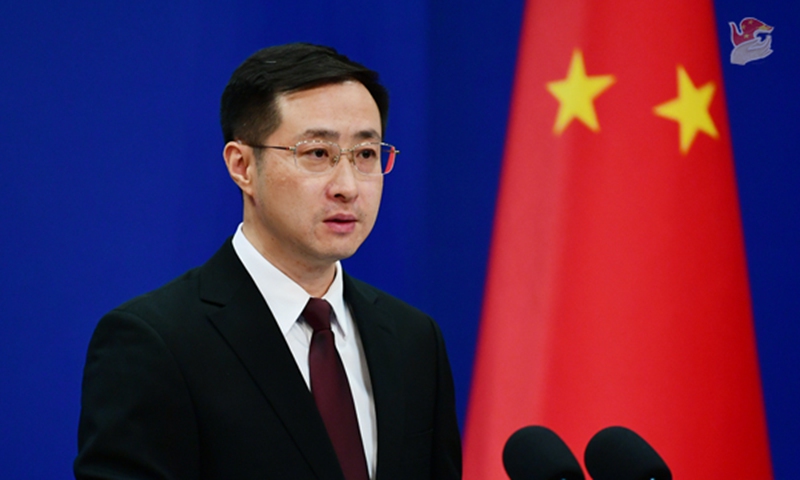
Quad is identified as the premier regional grouping that plays a leading role in the US' Indo-Pacific strategy. It is a tool the US uses to contain China and perpetuate US hegemony, Chinese Foreign Ministry Spokesperson Lin Jian said on Monday, urging the US to get rid of its obsession with perpetuating its supremacy and containing China, stop using regional countries as its tool, and stop glossing over the strategic intention behind all kinds of exclusive groupings.
The Indo-Pacific strategy attempts to patch up forces to exclude and contain China by peddling the "China threat" narrative, and Quad tries to muster military and security cooperation under the pretext of maritime issues—same intention, same tactics. Though the US claims that it does not target China, the first topic of the summit is about China and China was made an issue throughout the event. The US is lying through its teeth and even the US media does not believe it, said Lin, who made these remarks at Monday's routine press briefing in response to questions about US President Biden's comments at the 2024 Quad Leaders' Summit.
Lin emphasized that cooperation between countries should not target any third party or even harm their interests. Any regional initiative should follow the overwhelming trend of the region and promote regional peace, stability, and prosperity.
Ganging up to form exclusive groupings undermines the mutual trust and cooperation between regional countries, runs counter to the overwhelming trend of pursuing peace, development, cooperation, and prosperity in the Asia-Pacific and is bound to fail, the spokesperson said.
He urged the US to get rid of its obsession with perpetuating its supremacy and containing China, stop using regional countries as its tool, stop glossing over the strategic intention behind all kinds of exclusive groupings, and act on its word that the revitalization of its alliances is not targeted at China, instead of seeking selfish gains at the expense of other countries' strategic security interests and the wellbeing of the people in the Asia-Pacific.
Regarding the Quad's joint coast guard cooperation at sea, Lin noted that China is open to normal cooperation between relevant countries at sea, but the cooperation should not target other countries or undermine regional peace and stability under any pretext.

Dancers from the most renowned troupes in the world performed by the seaside in Qinhuangdao, North China's Hebei Province for the Move to Move International Dance Festival, which ran from Sunday to Tuesday during this year's Mid-Autumn Festival holidays.
For choreographer Paul Lightfoot, the festival marked the debut of his experimental work with Chinese dancers for the Specially Commissioned Co-creation section at Aranya, a well-known artistic community.
"I've never had this opportunity to work with Chinese dancers," Lightfoot, former artistic director of Nederlands Dans Theater (Netherlands Dance Theater), told the Global Times.
"For me, this has been the most beautiful part of this festival. Personally, it is the exchange you see because I could really share the things that I do in the ways I think and the ethics and the ideas and the imagination with them."
Chinese dancers are quite young when it comes to cultural exchanges and they "are one of the best casts I have ever seen. We've had a fantastic journey together."
At the invitation of the festival's founders, Yin Fang and Wu Mengke, the Englishman brought his idea about something "50 percent about the ballet and 50 percent about ethics" to the stage at Aranya.
"So we talk a lot and because they're young, I want to feed them something that they can keep for all their work," he added. "It's not educational, it's an exchange."
International festivals like the one in Aranya is a "perfect opportunity to find our friends, to meet new ones and to share our experiences together," said dancer Wu Mengke.
Having been to Chinese cities like Shanghai and Beijing, Lightfoot noted that China has a fascinating culture and he has seen "so many changes, and I feel very lucky. I wish my family and my friends could see and feel the same things I've experienced. It just feels great to be in the culture."
Culture and exchanges connect us with different cultural backgrounds, he added.
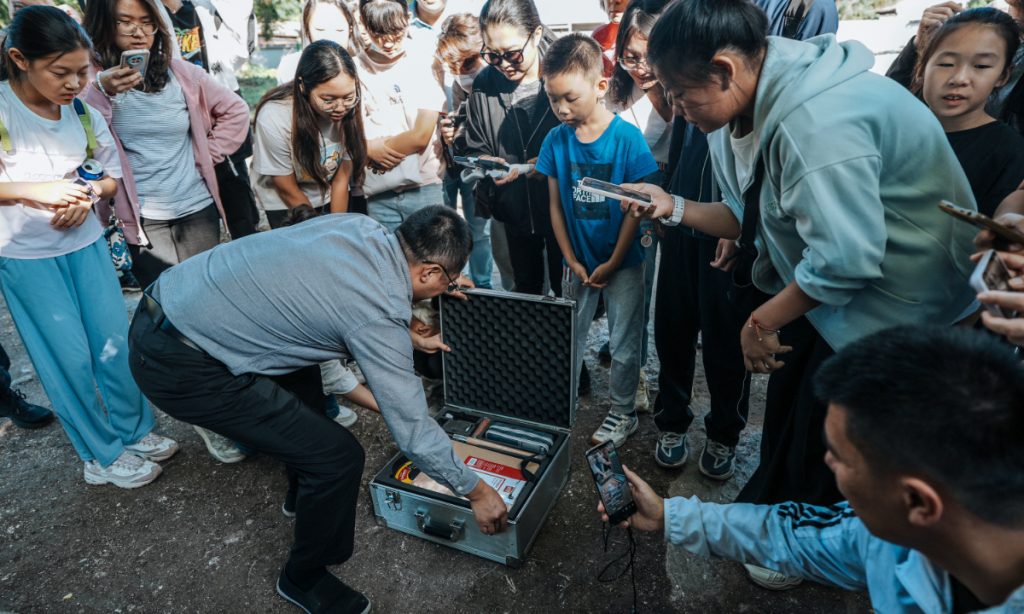
The public open day event at the Wenyuan Pavilion relic site in the Old Summer Palace, or Yuanmingyuan, in Beijing, invited over 20 students on Sunday, marking the first event since China's National Cultural Heritage Administration released a new guideline on Wednesday to enhance archaeological research and education.
The guidelines emphasized the importance of proper orientation and oversight in content and format, encouraging immersive visits and hands-on learning experiences. It also encourages provincial departments to publish lists of accessible archaeological sites, promoting structured activities at parks, museums, research institutions, and active excavation sites.
Zhang Zhonghua, a deputy director of the Beijing Archaeological Research Institute (BARI), guided visitors through the discoveries made so far. He noted that their excavations have revealed the perimeter walls, cornerstones and remnants of the drainage system, and they have also uncovered traces of rivers and bridges that once connected the pavilion to the surrounding landscape. On the spot, Zhang also noted how the pavilion's distinctive architecture, including its palace gates and inner gardens, reflected the grandeur of imperial China.
"Our goal is to inspire more young people to develop an interest in archaeology. Understanding our past is essential to preserving our culture and history," Zhang told the Global Times.
"In the future, we would also like to let more citizens and tourists see what our Wenyuan Pavilion looks like and open this site to the public," Zhang said.
The Wenyuan Pavilion, originally built in 1775 during the Qianlong reign of the Qing Dynasty (1644-1911), was one of the grand libraries that housed the "Siku Quanshu," or the "Complete Library in the Four Branches of Literature," the largest collection of books in ancient China.
However, the pavilion was destroyed during the raze of Yuanmingyuan by Anglo-French allied forces in 1860. Today, only its ruins remain. According to experts, archaeological work on this significant site began in August 2024, with the current excavation covering an area of 1,000 square meters.
During the event, not only were the structures of the site's walls and the specific drainage systems explained, but the tools and processes needed for archaeological work were also vividly demonstrated to students. Students were introduced to tools such as measuring tapes, compasses, markers, and the Luoyang spade.
Luoyang spade is a Chinese ancient tool used to detect underground ruins. The blade, measuring 20 to 40 centimeters in length and 5 to 20 centimeters in diameter, can penetrate several meters underground. By examining the soil it brings up, one can assess the composition and detect potential ancient tombs or underground features. Visitors, especially students, were fascinated by how archaeologists use this tool to analyze soil layers.
"The Luoyang spade is an essential tool for us. It can penetrate deep into the ground, and by analyzing the soil it brings up, we can identify what lies below the surface, whether it's a building or a tomb," Zhang explained.
BARI has been promoting public archaeology since 2015 by opening excavation sites like Yuanmingyuan to visitors. Live excavation demonstrations, expert-led tours, and interactive sessions have made archaeology more accessible to the general public, fostering a greater appreciation for China's rich cultural legacy.
As the excavation at Wenyuan Pavilion continues, the site will remain open to the public until the end of October, allowing more visitors to observe the meticulous work of archaeologists and engage with China's imperial history firsthand.

Thanks to expanding visa-free policies and favorable conditions like more manageable payment methods for international travelers, an increasing number of tourists are flocking to China.
A Chinese Foreign Ministry spokesperson mentioned at a recent press conference that in the first seven months of 2024, the number of foreigners entering China through various ports exceeded 17 million, showing a year-on-year increase of 129.9 percent.
Based on data from the National Immigration Administration, the number of foreigners entering through visa-free entry channels reached 8.542 million in the first half of the year, showing a significant increase of 190 percent year-on-year.
Ctrip Group, a leading online travel agency in China, announced that net revenue in its unaudited financial performance for the second quarter of 2024 reached 12.8 billion yuan ($1.8 billion), a year-on-year increase of 14 percent.
Each traveler has a unique perspective and experience. A multitude of foreign tourists have shared their experiences of traveling in China online, with the traffic data surpassing 1 billion views. ChinaTravel has become a buzzword on social media.
So what have international travelers highlighted in their China travel experiences?
Many travelers have expressed shock and fascination after uncovering China's rich history and culture by visiting museums and historical sites and experiencing traditional activities. China's vast and diverse natural landscapes, from pristine forests to majestic mountains, have been captured in travel photos and praised by tourists for their scenic beauty. The modern achievements of China, including high-speed trains, intelligent city features, and green development, have left a deep impression on international visitors.
Foreign visitors often comment on the safety they feel while traveling in China, sharing personal anecdotes of feeling secure while exploring different parts of China, including late-night walks without fear of theft or assault. Female travelers, in particular, have reported feeling safe in China, noting that they do not experience the same level of street harassment as in some other countries.
Stories of friendly interactions with locals eager to help foreign visitors have contributed to a warm and welcoming atmosphere for tourists, reflecting their deep engagement with locals. These comments from international travelers and vloggers reflect a growing interest and positive reception toward travel in China.
Then what are the catalysts behind the boom in inbound tourism?
At a micro level, besides the 72/144 hours visa-free transit policy, Chinese consumer goods and services offer a globally leading cost-performance ratio and richness, enhancing the attractiveness of inbound tourism. As of July, the cumulative CPI in China since January 2020 was about 27 percent lower than that of the US, with the service industry CPI base index 17 percent lower than that of the US.
According to statistics from the online travel planning site Budget Your Trip, as of August, among global popular tourist destinations, the average daily travel expense in China is $80, with daily accommodation and dining costs being $69 and $23, respectively.
Accordingly, the resumption of flights has also been a contributing factor. As of August 5, the number of international flights has recovered to nearly 90 percent of 2019, marking a 45 percent increase compared to 2023.
According to data from the National Immigration Administration, by the second quarter of this year, the number of Chinese mainland entries and exits by residents of Hong Kong, Macao and Taiwan exceeded the level of 2019, and foreigners have recovered to 60 percent. Foreign tourists spend an average of 3,459 yuan per person per day in China, directly driving consumption to exceed 100 billion yuan.
With the goal of perfecting the modern tourism industry system and accelerating the construction of a strong tourism country, inbound tourism is expected to receive more policy support to unleash its limitless potential.
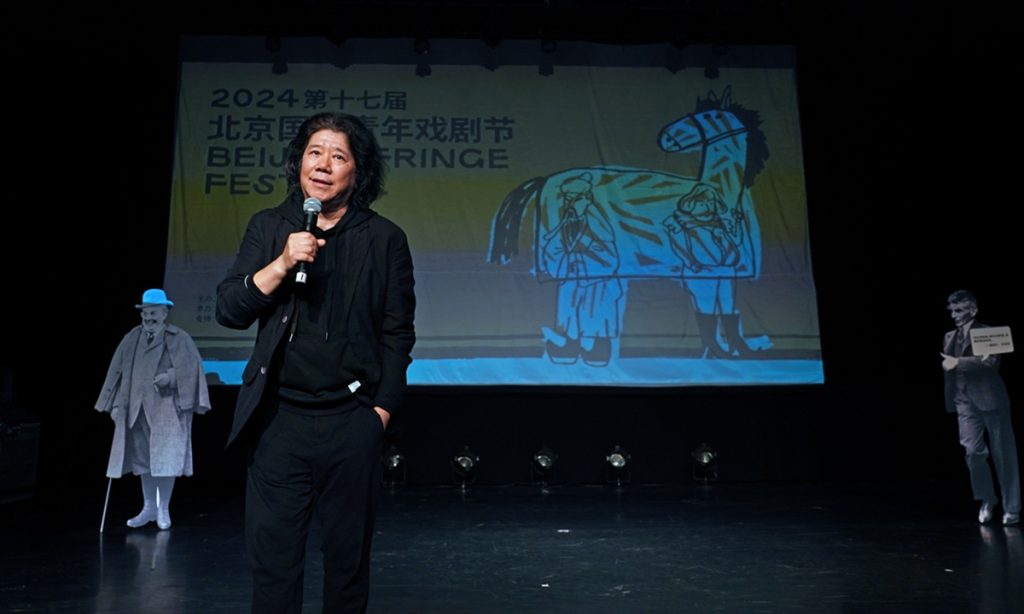
"In the 16-year history of the Beijing Fringe Festival, people have come and gone, but the young gaze, heartbeat and young feeling have always been there for the festival," said Meng Jinghui, artistic director of the Beijing Fringe Festival, on Wednesday night.
The annual fest for young theatergoers, which runs until October 7, will feature 15 theater works across 30 performances staged by young actors and producers across the city.
"Theaters for young people and international horizons are always at the central stage of the Beijing Fringe Festival," added Meng.
Among these performances are the opening shows, When Time Comes to the Second Half, Riding Alone for Thousands of Miles and Homeland.
As 2024 marks the 60th anniversary of diplomatic relations between China and France, French theaters will be highlighted at this year's fringe festival, Li Jianjun, the festival's program director, told the Global Times on Thursday.
In the Drama Online section, videos of outstanding theatrical works from the Festival d'Avignon will be screened during the festival.
Besides this, the Tribute to Molière section will host events such as recitations of Molière's classic plays, introductions by scholars, and screenings of Molière's plays.
Ever since 2014, the section 40 Hours V Drama has become the most challenging and exciting part of the Beijing Fringe Festival. Participating creators randomly select topics and complete creations in a designated space within a limited 48-hour window. They then take turns presenting their creative results on the stage. Professional judges and public judges voting and selecting awards at this year's event are sure to see fierce competition among young creators.